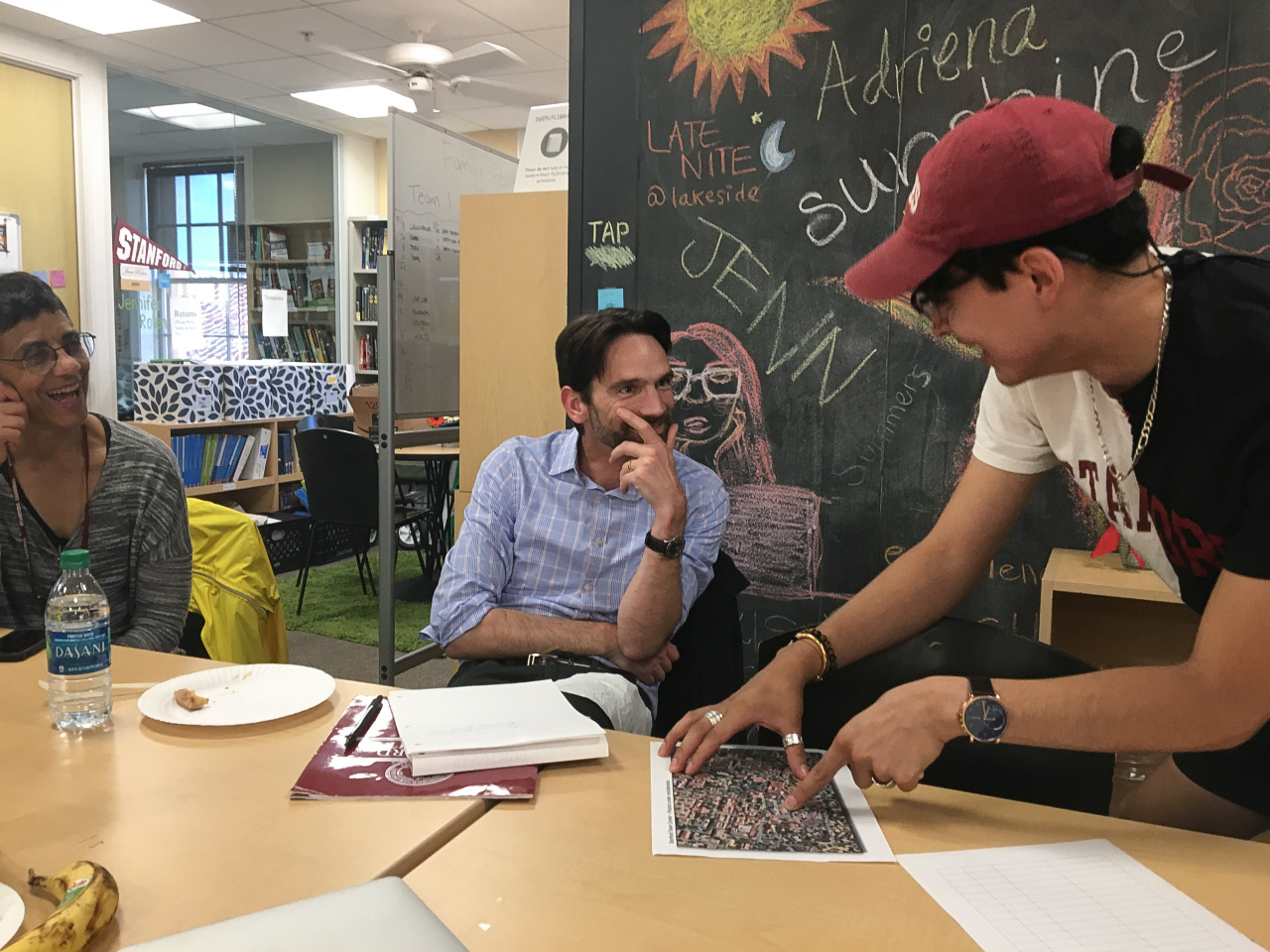On Wednesday night, Vice President for Campus Engagement Matthew Tiews led a town-hall brainstorming session to hear from first-generation and/or low-income (FLI) students about the ongoing Town Center Project. An offshoot of the University’s Long-Range Planning efforts, the project aims to reimagine the space around White Plaza as a thriving hub of campus social life.
The Wednesday brainstorming session followed a previous town hall in late April that was open to the entire Stanford community, but this time, it focused on the FLI community — one of the stakeholder groups that the Town Center Project design team aims to solicit feedback from.
Tiews, who is leading the Project, noted that the White Plaza region has the potential to become a more active social hub for students.
“The [Main] Quad is kind of the academic center of the campus,” he said. “This region should be the social center of it. The University senses that it’s underperforming right now.”
“Our first six months is just about defining the program,” he later added. “It’s about what we want to do in this area. What would be most exciting for the community? What would help achieve our goals?”
Tiews later framed the brainstorming session around four “buckets”: food and culture, group spaces, exchange of ideas and retail, services and support. He explained that with regard to the exchange of ideas, the University hopes the new town center will facilitate engagement with the intellectual work that faculty, students and community members work on.
Students then gave recommendations for each bucket. Regarding the exchange of ideas, some suggested that having a speaker series of engaging professors might be an effective way to engage with the space. With respect to where exactly those professors would speak, some suggested the White Plaza stage.
“We could somehow incentive [or] give students’ org[anization]s a space to organize their events and be a neutral space,” recommended ASSU Senator Josh Pe ’22. “We don’t want a certain group to be dominating the space.”
Tiews also noted that the University is looking at how they can best provide space to bring people together, including for events, group activities, meetings, co-working and project-based learning.
When asked for his big-picture vision of what the space could look like, Isaac Garcia ’22 — a Frosh Council representative — drew on his experiences living in Fort Worth, Texas.
“I would model it exactly like Sundance Square, Fort Worth, because there are big umbrellas and a stage,” Garcia said, referencing the pedestrian-friendly shopping and leisure area in the Texas city’s downtown area.
Ayush Pandit ’22, meanwhile, emphasized a need to expand affordable shopping on campus.
“I feel like there’s still a pretty strong need for basic general supplies — like things you pick up at a Walmart or things like that — on campus, that is explicitly targeted towards students,” Pandit said.
As the hour-long session wrapped up, Tiew emphasized that “there are opportunities to submit further comments through [the Stanford Town Center] website.”
Contact Richard Coca at richcoca ‘at’ stanford.edu.
